21 May 2019
Much of my design career has been spent remotely freelancing or running a small agency, where thoughtful project proposals play a huge role in securing work. Both the format and content of these proposals has changed each year as I gain more experience with design, client communication, and project management.
When I get a promising, substantial project inquiry I’ll schedule a 30 minute call to gather the necessary info to properly understand the goals, scope, and budget as well as get to know the person a bit. I can then piece together a proposal that will allow them to determine:
These proposals are not a replacement for direct communication, however. They serve as an aid, allowing you to collect and organize your thoughts and share terms before committing too much face time. Getting all the way to a contract before realizing something won’t work out would be tragic and inefficient, resulting in too much time and money lost when done too often.
I now use a PDF slide deck after realizing my previous documents were overly text heavy, not entirely depicting an accurate feel for my capabilities and what it’s like working with me. While these proposals are all roughly based on a single template they are ultimately pretty unique since the needs of each potential project are so unique themselves. It’s tailored to each project while addressing the same frequently asked questions.
Here’s an outline of what I have learned to include within both freelance and agency proposals in order to best proactively address potential client/partner concerns and win projects.
Customization here can have a big initial impact and excite those reviewing. Mention who the proposal is for, who you are, the date, and, if possible, a visual element or two from the potential partner’s current brand.
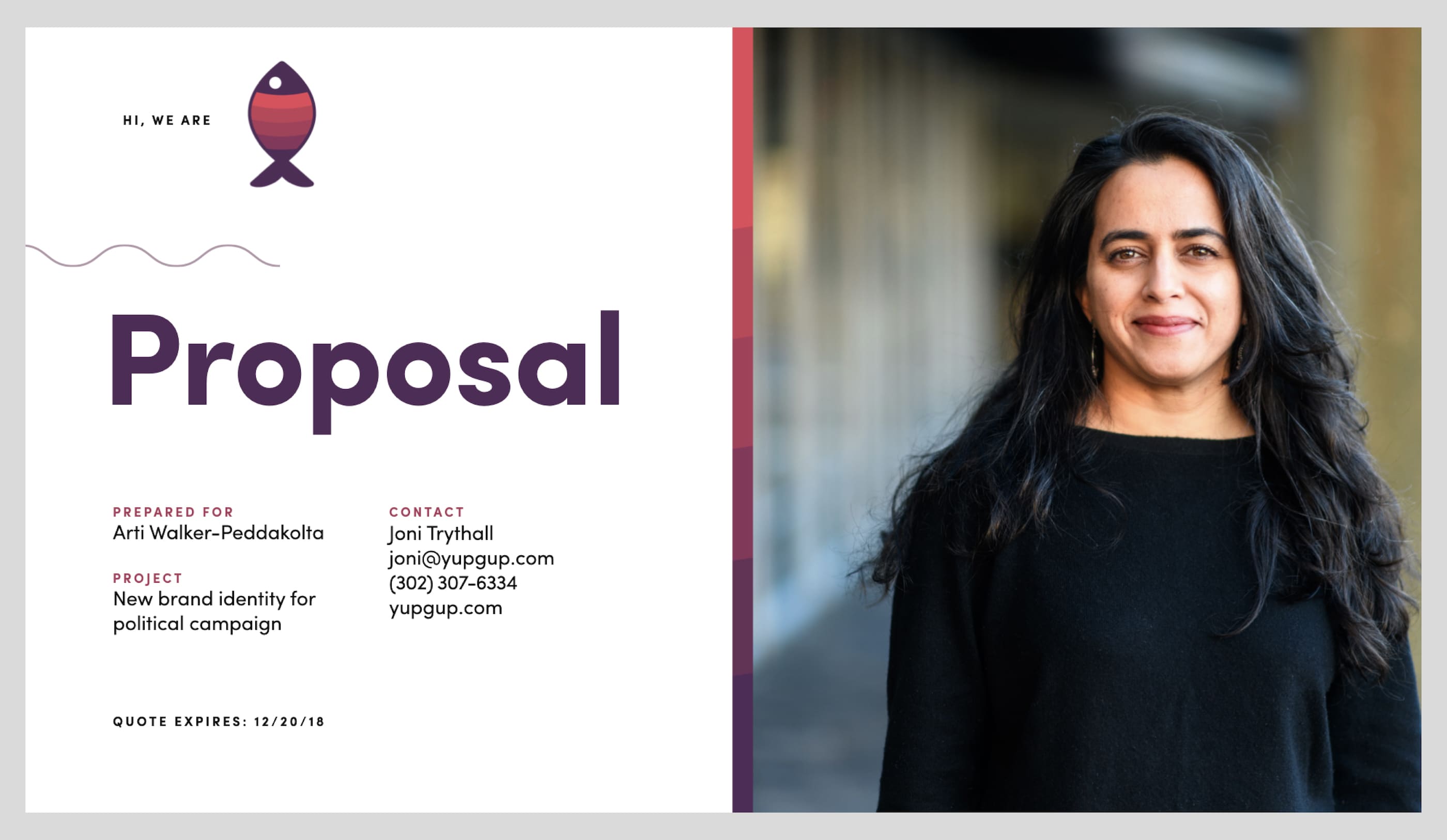
Perhaps one of the most important details to include on this first page is an expiration for the terms within the proposal. A lot can change in a short amount of time and you certainly don’t want to be held to the same pricing or timeline a year later.
Clients need to know and connect with whomever they will be working with. For my YupGup proposals I include a page that captures who we are as an agency and then a team page with short bios. My freelance-related proposals are similar, dedicating a page to a high-level look at my general work philosophy and personality and a more detailed bio that better communicates why I am a good fit for the company/organization.
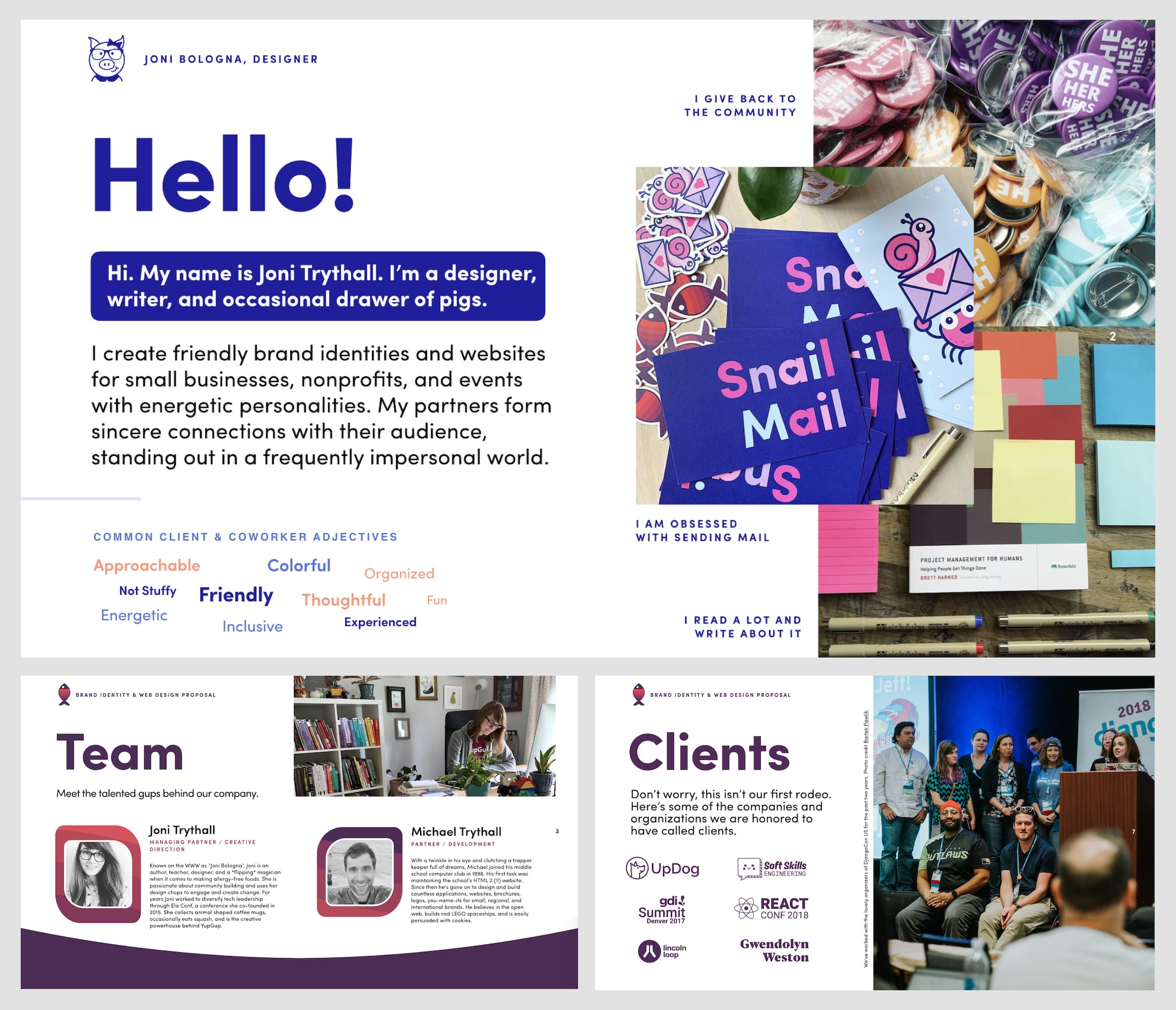
Don’t shy away from including non-work interests and hobbies here that you are proud of and help shape you. I have found that more often than shopping on skills and experience people want to work with someone that is sincere and feels like they would be enjoyable to collaborate with.
These two pages offer a valuable opportunity to reassure them that in addition to being experienced you are also humble, energized, and fun (for example!). Also, in the context of an agency, this is a great way to share your unique story and introduce the faces behind certain work, humanizing the experience and allowing them to better visualize the collaboration—which is especially needed in a remote relationship.
This page is dedicated to summarizing and showcasing your understanding of their project that was brought about by initial questioning.
Within this page you can show the potential partner that you were listening and understand what needs to happen for the project to be a successful one. I generally write up 2-3 paragraphs to this effect and include a list of benefits they can expect from the project’s completion that align with these outlined goals. So for instance, listing out the benefits of an updated brand identity and website as it relates to grow and sales.
I like to list out my primary skills here that reflect where I’m strongest but also represent the type of work I want to keep doing.
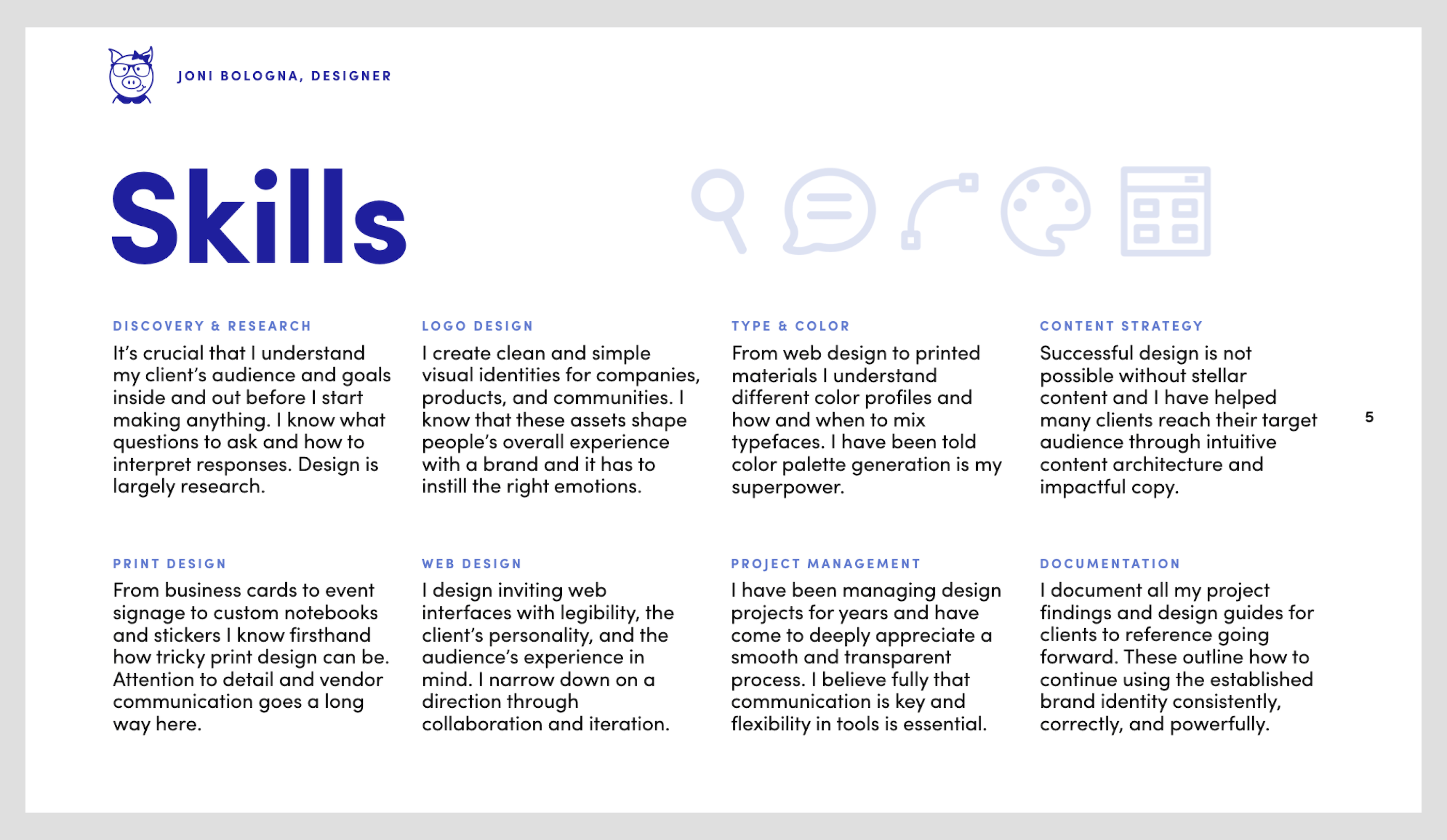
You may also find that including all your skills can be insightful for potential partners that just didn’t know you do all that, inspiring them to consider you for additional types of work.
Select at least three of the most relevant pieces of your portfolio and dedicate a single page to each. This can seem repetitive but I’d argue it provides a more cohesive proposal to have these pieces in a single document. Furthermore, you can’t expect them to make direct connections between certain projects on your site and their project, so spelling this out allows you to control the narrative and be explicit.
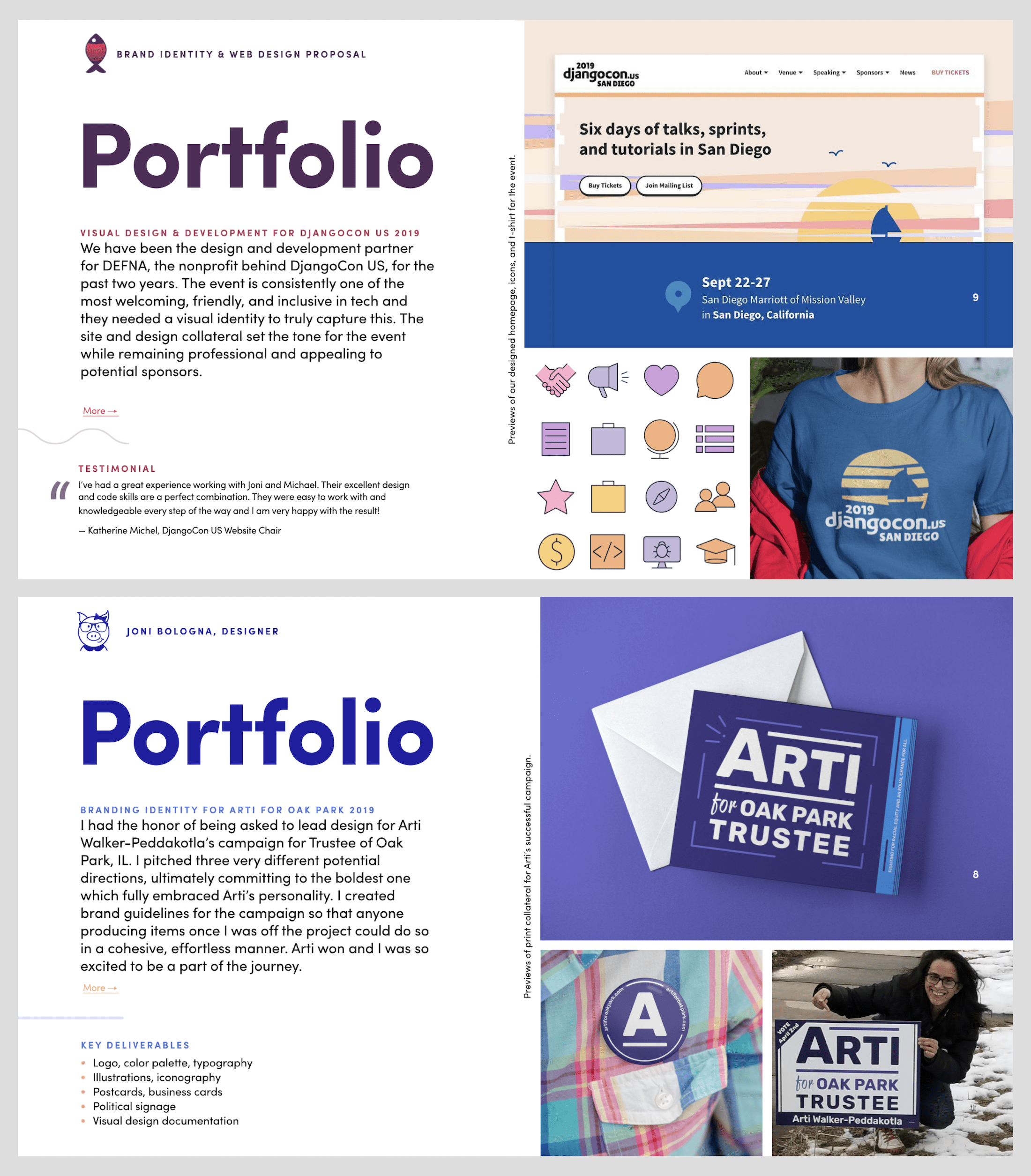
Details to consider capturing here include:
Provide enough details while avoiding a wall of text that may scare people away, including just enough text and enticing photos to capture the spirit of the project and compel people to learn more through links.
Our services at YupGup generally boil down to:
I break down the items needed for each of these three categories and assign a dollar amount to each. I also include some process details like specific types of deliverables to expect and number of iterations included in the prices.
Seeking out design work can be a very intimidating and mysterious thing and people therefore appreciate this transparency into process and general expectations. It speaks to just how much work is involved since it’s always more than what those unfamiliar with the process initially expect, helping to explain your pricing better.
I add a clear “What’s next” section on this page, mentioning that a deposit is required, to expect invoicing to be delivered in two stages (usually), and how to contact me with questions or to officially get started.
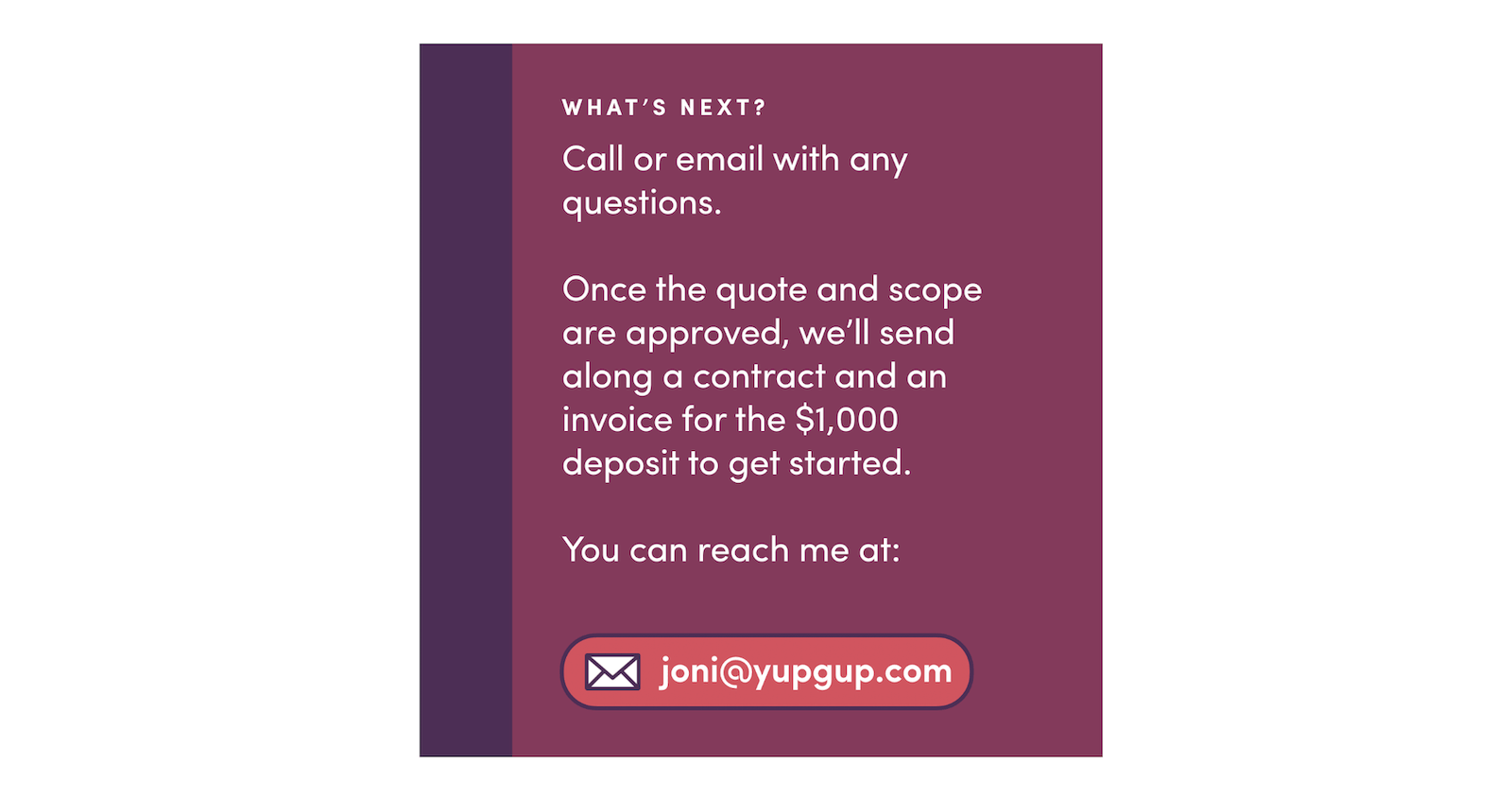
Perhaps worth noting is that the proposal is not a contract replacement, but spelling out these types of details now leaves fewer unknowns and allows decision makers to better plan for and budget working with you.
Showcase your expected timeline for the project in a visual way that is easy and quick to absorb. Be sure to mention that the timeline is based on the project starting by a specific date since this same timeline will not be relevant forever.
I map out a timeline by weeks and never specific days, bake in padding throughout, and am sure to stress that it is based off needed responses from them within 3 business days. A partner that takes 1+ weeks to give feedback will throw this timeline off entirely, jeopardizing the timeline of other projects as well.
On the final slide I like to include a note of thanks and social media links for further connecting. This can also serve as prime real estate for including screenshots of any mentions you may have collected throughout your career.
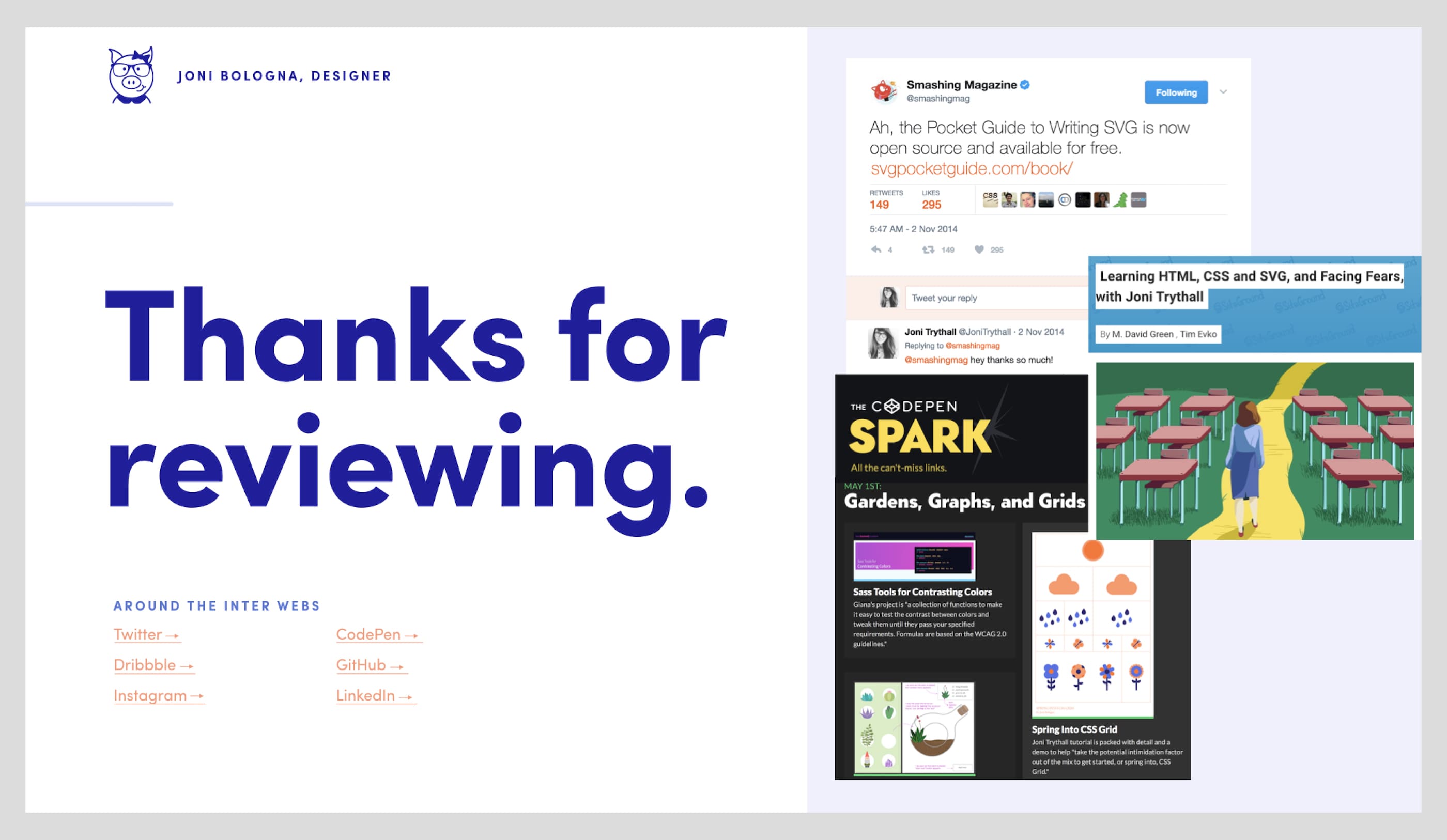
If you are looking for a slide deck template to get up and running as quickly as possible I have found this one from Hoodzpah to be the highest quality.
If there is anything else you have learned the hard way to include within these proposals I’d love to hear about it: @jonitrythall. Farewell, friends, and happy proposal-ing.
In need of design work? Email me and let’s get started on a lovely proposal together 🤓